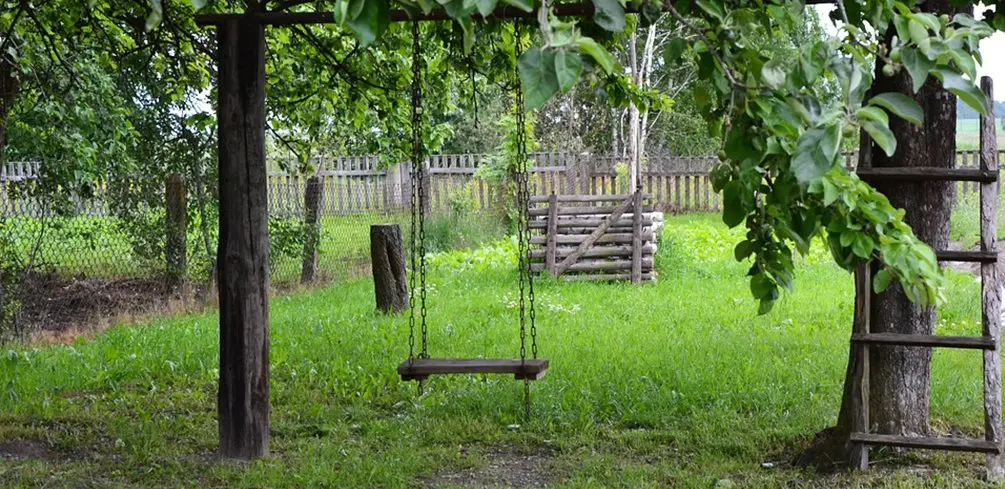The best materials to fill bean toss bags with are corn kernels or pellets. Corn bean bags (cornhole bags) slide as they break down and create dust over time but are susceptible to bugs and mold. Pellet bags don’t require breaking in like corn and avoid bugs and mold. Pellet bags do bounce more but last so much longer.
The most important part of a bean bag game is the bags. If you have poor quality, light, and thin bags then your players will be disappointed. A good solution for this would be to fill them with the right materials that are either heavier or denser than average beans.
We will go over some of the popular choices and this can give an advantage to those who are new to the game.
Playing cornhole or bean bags is so much fun for all ages. Whether you are playing with a small group of friends or at your family reunion, this is the perfect game for anyone looking to have some fun and get active in the process!
To start out, all you need are two boards and the bean bags. Here is a tutorial on what fabric and filling to use to make the perfect bags.
Table of Contents
What to Fill Bean Bag Toss Bags WIth?
There are many different options depending on if you are going to be playing cornhole or beanbags. The creation of the bags is the same it’s just the filler that is different. To create you will just need the material listed below and some tools like scissors and a needle.
Here are the different types of filler material you can use.
Corn Kernels for Cornhole bag
The first is obvious and that is corn filled cornhole bags that use whole corn kernels. These are very popular as the veterans of the game who have lots of skills enjoy them more because they have a breaking in period of time. The corn filled bags are covered in duck cloth on both sides though some enjoy having microfiber on one side and duck cloth on another.
The reason being is duck cloth (canvas) will slide on the cornhole boards whereas microfiber will stop when it hits the board. If you can control what side of the bag hits the board then this type of setup will be for you, if not and you are new to the game just stick with the duck fabric on both sides of the corn filled bags.
Corn kernels are a very popular choice for bean bags. They have the feel of breaking them in and they tend to be more preferred by those who play often because of this. While the corn filled bags seem to be the best the main issue is they do break down over time, creating dust which helps the bag perform as it does.
In time though they will break down even more and be too light. When filling a bag it is recommended to use between 14-16 ounces of corn kernels and the weight of the duck cloth will be 10 ounces.
Another disadvantage of using corn is that it does attract bugs and if they get wet, mold. It’s for this reason if you do decide to go this route I recommend getting a plastic sealed container to store them in, keeping them safe from bad weather and bugs.
Want to play cornhole? We have all the rules for cornhole so you will know exactly how to play.
Plastic Pellets for Cornhole bags
Next, we look at plastic pellets for cornhole bags, plastic is dense and hard, not to mention it does a great job of resisting water and insects. The downside is that they can bounce more instead of sliding when it hits the cornhole boards. When filling a bean bag with plastic pellets you will need 14-16 ounces for every cornhole bag.
If you want to make budget bean bags that don’t require any sewing machine you could always go with plastic pellets I recommend getting a few large ziplock bags. Fill each cornhole bag about 2 inches full of the pellets, seal tightly.
If you can weigh them make sure to use 14-16 ounces of plastic pellets. These are used most often in regulation cornhole as the bag doesn’t change much over time.
Resin Pellets for Cornhole bags
Resin pellets are similar to plastic pellets but resin is viscous and gluey.
This will help to prevent cornhole bags from the bounce that happens when the bags come in contact with the cornhole boards. This can be a downside as they can be slippery on the boards depending on your playstyle.
Beans for Bean Bags
Beans can be used as filler for bean bags and these are used for kids’ toys often though nowadays we are seeing the switch to more plastic pellets.
Fill the bean bag with 14-16oz weight of dried beans and use duck cloth (canvas) if you have available through a lot of these will be more on the cheaper side and just be regular fabric. Kids can then play a bean bag game in their yard and they will really enjoy it.
Beads for Bean Bags
Beads are next on the list and a favorite to some. The beads in the bag really feel neat when holding them in your hand. We want to stick the usual 14-16oz weight of beans in a 6’x6′ bean bag.
One thing to keep in mind though is that the beads are a lot lighter than beans so they will fly farther.
What is Duck Cloth Material?
Duck cloth material is also known as a canvas which is heavy, plain-woven cotton fabric. The reason it is preferred for cornhole bags is that it slides when the bag hits the board.
Also, the bag seems to stay clean easily with this type of material. This is very important because if the cornhole bags are filled with corn they shouldn’t get wet, causing them to get wet will invite mold into your cornhole bag.
DIY Cornhole Bags | Easy Sewing Project
Supplies Needed for this DIY Project
- Scissors
- Sewing Machine (or needle to sew)
- Marker
- 8 pieces of 7” x 13 ½” Duck Cloth Fabric (2 colors/4 pieces each)
- Polyester Thread
- Filler (Corn, Resin, etc)
- Funnel
When making DIY bags make sure to have 8 pieces of duct cloth, 4 of one color, and 4 of another color to create 8 corn filled bags. You will want to use polyester thread as the polyester thread is stronger than the usual and UV protection for outdoor use.
Next, draw 7” x 13 ½” Rectangles on Fabric and cut the pattern out. Next, fold the fabric pattern into a square. Use a sewing machine to stitch the bag together, all accept a 2-inch hole on the top of the bag (opposite of fold).
Make sure to have a seam allowance of 1/4 inch and another seam allowance of 1/2 inch from each of the sides they should be in a straight line running parallel with the fabric’s edge.
Once done, invert the bag and use a funnel to fill it up with the filler of your choice. The reason we turn the bag inside out is so you don’t see the stitching it really makes the fabric look like it was sewed by a professional and not DIY.
In the end, you will sew 6×6 cornhole bag squares of fun to play a cornhole game.
If you need more of a breakdown tutorial on this here is a great site that shows the project.
American Cornhole Association Regulations
According to the American Cornhole Association, the regulations state each cornhole bag to be 6 x 6 x 1 inch with 16 oz of filler either whole kernel corn or resin pellets. Sewing the fabric sides should be double stitched with a 10 oz weight of canvas duck cloth.
Conclusion
Bean bag games are fun and the best way to get your guests interacting. You might even have some new friendships form over bean bags! You really can’t go wrong with a game like a cornhole or bean bags and you don’t have to spend a lot of money to create them.
Follow the steps above on how to create the bean bags and you’ll have a lot of people looking forward to playing again soon.
Using the right filler for the bags be it corn, resin or plastic is important and also the correct fabric. The different material does react different with the board and when they hit the corners so try the projects above and see which way you like them.
Now that you know how to make the bags it’s time to start playing. We have a full list of how to play cornhole with the rules completely explained for you. We hope you enjoy cornhole and spend the time outside with your family when the weather is nice.
from Best Playground Sets https://bestplaygroundsets.com/what-to-fill-bean-bag-toss-bags-with/
via Best Playground Sets





No comments:
Post a Comment